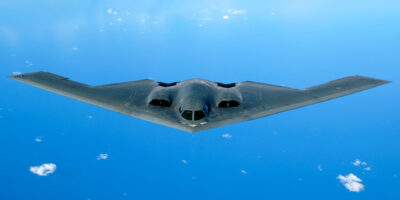X-59: Revolutionizing Low-Boom Flight
The X-59 Quiet Supersonic Technology (QueSST), developed by NASA and Lockheed Martin, represents a significant step in aviation. Unlike traditional supersonic jets, the X-59 aims to reduce the intensity of sonic booms. This technology could change commercial air travel, making it faster and more efficient.
Background and Development
The need for faster air travel has always been present. Early supersonic flights, like the Concorde, faced challenges due to noise regulations. Sonic booms produced by these aircraft were disruptive. This led to restrictions on supersonic flight over populated areas. The X-59 project began to address these issues. NASA partnered with Lockheed Martin to develop an aircraft that could fly faster than sound without disturbing people on the ground.
Design and Features
The X-59 has a unique design. Its long, slender nose helps reduce the noise of the sonic boom. The aircraft uses state-of-the-art aerodynamics and structures. These features include:
- A long, narrow fuselage
- Advanced wing designs
- Specialized propulsion systems
These design elements help control the pressure waves created as the aircraft travels through the air. This control reduces the sonic boom to a quiet thump that resembles distant thunder.
Technological Innovations
The X-59 incorporates several key innovations. One of them is the eXternal Vision System (XVS). This system replaces the traditional cockpit windshield. Cameras and displays provide pilots with a clear view of their surroundings. This allows for a more streamlined design, further reducing drag and noise.
Another innovation is the use of advanced materials. The X-59 uses lightweight composites and metals. These materials are strong yet flexible, critical for maintaining structural integrity at high speeds.
Testing and Implementation
Testing for the X-59 involves several phases. Wind tunnel testing and computer simulations were the first steps. These helped refine the design before building a prototype. The prototype undergoes extensive flight testing to validate its performance and noise reduction capabilities.
The goal of these tests is to gather data that supports the X-59’s ability to fly quietly over land. If successful, this information could lead to changes in current supersonic flight regulations. This would be a significant breakthrough for commercial aviation.
Potential Impact on Commercial Aviation
The success of the X-59 could have far-reaching effects. Reducing the noise impact of sonic booms may open new markets for supersonic travel. Airlines could offer faster transcontinental flights, significantly reducing travel times. This could transform how people think about long-distance travel.
Businesses might benefit from reduced travel times. Faster flights could lead to more efficient operations, cutting down on time lost in transit. This could indirectly boost productivity and economic growth.
Environmental Considerations
Supersonic aircraft have faced criticism for their environmental impact. The X-59 project addresses these concerns through its design and materials. By reducing the sonic boom, the aircraft minimizes noise pollution. This is important for protecting wildlife and reducing urban noise levels.
The X-59’s efficient design also aims to lower fuel consumption. Using advanced materials and aerodynamic features, the aircraft achieves higher fuel efficiency. This reduces its carbon footprint, aligning with global efforts to combat climate change.
Future Prospects
The development of the X-59 is part of a broader movement in aviation. Other companies are working on similar technologies. The success of the X-59 could lead to rapid advancements in the industry.
Further research and development will likely focus on improving fuel efficiency. Innovations in propulsion systems and sustainable fuel sources are critical areas of study. Additionally, ongoing work to refine noise reduction techniques will continue.
Regulatory bodies will need to adapt to these new technologies. Changes in air traffic control systems and flight regulations are necessary to accommodate supersonic travel. Collaborative efforts between governments, researchers, and the aviation industry will be essential.
The potential for commercial supersonic flight to become mainstream is closer than ever. The X-59 is a pioneering effort that could pave the way for a new era in air travel. This project highlights the importance of innovation and collaboration in overcoming challenges and achieving progress.



Subscribe for Updates
Get the latest articles delivered to your inbox.
We respect your privacy. Unsubscribe anytime.